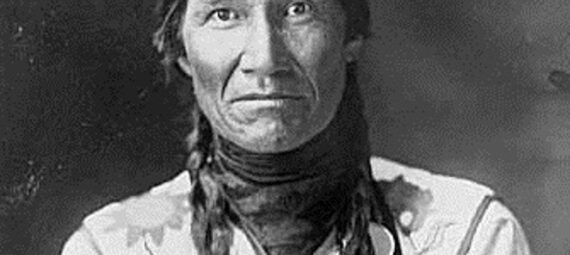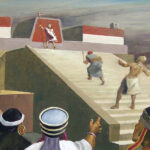As Latter-day Saints, many of us have a deep interest in the peoples and places described in the Book of Mormon. It’s natural to want to find connections between the scriptures we treasure and the world around us, especially when it comes to questions about ancient American civilizations. Over the years, some have suggested that the Cherokee language shows signs of a connection to ancient Hebrew, which, if true, might support the idea that some Native American groups are descended from Book of Mormon peoples.
This idea is often promoted within the Heartland Model, a theory that places the events of the Book of Mormon in the central and eastern United States. Because the Cherokee historically lived in this region, some proponents of this model have tried to link Cherokee culture and language to the ancient Israelites described in the Book of Mormon.
One common claim is that the Cherokee language contains words or sounds that resemble Hebrew, or that the Cherokee writing system, the syllabary created by Sequoyah, was influenced by Hebrew script. On the surface, these connections may seem compelling. But when we look at the linguistic evidence carefully and honestly, these claims don’t hold up. And understanding why actually strengthens our ability to separate meaningful truth from well-intentioned speculation.
What the Cherokee Language Actually Is
Cherokee is a member of the Iroquoian language family, a group of Indigenous languages spoken in parts of what are now the United States and Canada. Other languages in this family include Mohawk, Seneca, and Tuscarora. These languages are unique to North America and have no historical or linguistic relationship to any Old World languages.
Cherokee is known for being polysynthetic, meaning that it forms complex words by combining many smaller parts,often packing what would be an entire English sentence into a single word. Its grammar, phonetics, and vocabulary evolved right here on this continent, shaped by centuries of culture and community.
In the early 1800s, a Cherokee man named Sequoyah developed a writing system for his language. This system, called a syllabary, uses symbols to represent syllables rather than individual sounds. It was a groundbreaking achievement that made literacy widespread among the Cherokee people in a remarkably short time.
What Hebrew Is
Hebrew, on the other hand, is a Semitic language, part of the Afroasiatic language family from the Middle East. It is the language(mostly) of the Old Testament (or Hebrew Bible) and is closely related to languages like Aramaic and Arabic.
Hebrew has a completely different structure from Cherokee. It’s built around triconsonantal roots, where three consonants form the base of a word, and meaning is modified by inserting vowels and adding prefixes or suffixes. Hebrew grammar, pronunciation, and writing developed in a different part of the world, thousands of years ago, within a different cultural and historical context.
Why the Two Languages Aren’t Connected
Despite the surface-level claims, Cherokee and Hebrew are not related. Linguists, scholars who specialize in the scientific study of language, have thoroughly studied both languages, and there is no evidence of any linguistic connection. Here’s why:
- Different language families: Cherokee is Iroquoian; Hebrew is Semitic. These families are completely unrelated.
- No shared vocabulary: There are no consistent patterns of shared words between Cherokee and Hebrew. Any similarities in sound are coincidental and not part of a broader system of linguistic relationships.
- Different grammar and structure: The way each language builds words and sentences is fundamentally different.
Some supporters of the Heartland Model point to similarities between characters in the Cherokee syllabary and Hebrew letters. But these are visual coincidences. There’s no historical indication that Sequoyah had any exposure to Hebrew. In fact, most scholars agree that he invented the syllabary independently, possibly adapting some character shapes from English letters, though he assigned them entirely different sounds.
Others point to similar-sounding words, for example, saying that a Cherokee word sounds like a Hebrew word for peace or God. But linguists call these false cognates, words that sound alike in different languages but have no historical connection. Without consistent patterns of sound changes and shared roots, these comparisons are just accidental resemblances.
Why This Matters for Latter-day Saints
As members of the Church, we care deeply about truth, both spiritual truth and truth about the world around us. The Book of Mormon is a sacred witness of Jesus Christ, and it invites us to seek knowledge “by study and also by faith” (D&C 88:118). That includes being willing to evaluate claims using reliable evidence and sound reasoning.
Believing that Cherokee is related to Hebrew may seem like a faith-affirming idea, especially if we’re excited about identifying Book of Mormon peoples in the Americas. But when such claims are based on weak or incorrect evidence, they don’t strengthen faith, they create confusion. If people later discover that these ideas don’t hold up, it may cause them to question more than just the claims,it may cause them to question their faith itself.
It’s also important to respect the Cherokee people and their language. They have their own sacred traditions, histories, and linguistic heritage that are not dependent on Old World origins. Trying to impose an outside narrative on their culture,especially one that isn’t supported by solid evidence,can unintentionally diminish or distort their own identity.
Finally, understanding what the evidence does and does not support helps us avoid building our testimonies on assumptions that might later collapse. The Book of Mormon doesn’t need linguistic shortcuts to be meaningful. Its power is in its spiritual message: its testimony of Christ, its invitation to repentance, and its affirmation of God’s love for all His children.
The Bigger Picture
There are faithful, believing Latter-day Saint scholars who approach these topics with care, humility, and rigor. Many have pointed out that while the Book of Mormon clearly refers to an ancient Israelite migration to the Americas, it doesn’t give us all the answers about when, where, or how those events took place. The Church itself has no official position on Book of Mormon geography, and encourages members to focus on the book’s spiritual purpose, not just its setting.
That doesn’t mean we shouldn’t explore, ask questions, or study. It just means we need to be thoughtful about the kinds of evidence we rely on. The idea that Cherokee is related to Hebrew may feel exciting, but it’s not supported by the linguistic record. And when we care about both the Book of Mormon and the truth, we should be willing to acknowledge that.
Cherokee and Hebrew are both beautiful, meaningful languages with deep histories, but they are not related. The claim that they are has been used to support theories like the Heartland Model, but the linguistic evidence simply doesn’t back it up.
As Latter-day Saints, we can be faithful and informed. We can appreciate the power of the Book of Mormon without relying on faulty linguistic claims. And we can respect the unique contributions of Indigenous peoples and their languages without trying to fit them into frameworks they don’t belong to.
Truth stands on its own. And when it comes to language, the truth tells a richer, more accurate, and more respectful story than any invented connection ever could.





